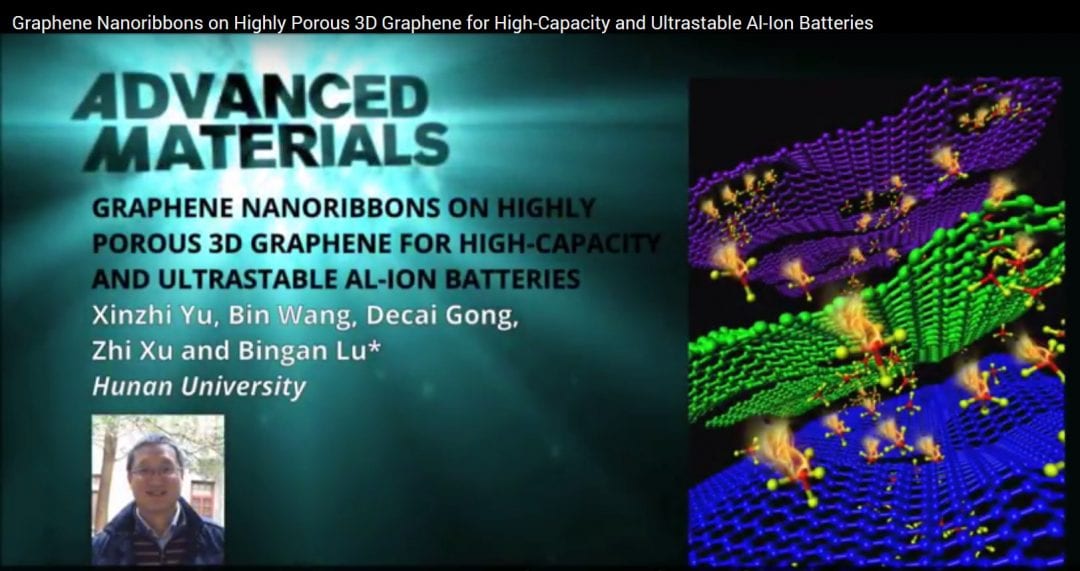Light-weight energy sources for many devices are lithium ion batteries. However, they suffer from weak performance in cold environments and nature is threatened when deposits of this rare element are accessed. There is a metal abundant all over the earth to address both issues: aluminum.
Graphene is of special interest as cathode material of Al-ion batteries toward high capacity and long cycle life.
In a recent communication in Advanced Materials Bingan Lu from the Hunan University in China and co-workers report a cathode material for high-capacity Al-ion batteries.
“Here we prepared graphene nanoribbons, a highly porous 3D graphene foam as a binder-free cathode for flexible aluminum batteries.”
Low-energy plasma etching of graphene supported by Ni foam formed nanosized pores that merge to a nanoribbon for longer etching times. Upon removal of the Ni substrate “The [foam with] large amount of nano-voids facilitated the easy intercalation of ions into the entire graphene cathode.”
A battery based on this cathode exhibited no capacity decay for outstanding 10 000 cycles and rate capacities of up to 148 mA h g-1. Charging in just 80 seconds compared to discharge for more than 3100 s and functionality at high, as well as at low temperature render the battery interesting for applications in public transport and portable devices.
This is a transcript of an Advanced Materials Video Abstract – watch the video here.
To know more, please check out the Advanced Materials homepage.

















